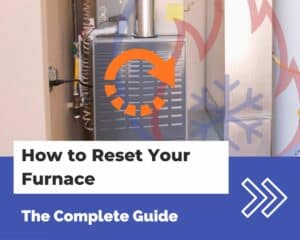If your furnace starts blowing cold air, that’s not a good sign.
There are a variety of reasons why a furnace might blow cold air. Some fixes can be done yourself, while others require an HVAC professional.
If your furnace is blowing cold air, there is most likely an issue with the thermostat, air filter, high limit switch, flame sensor, gas valve, or condensate line.
In this article, I’ll go over step-by-step instructions on what you should do if your furnace is blowing cold air. I’ll also cover the different things that you can try to fix your furnace on your own.
What you should do when your furnace is blowing cold air
There are a lot of different things that can cause your furnace to blow cold air.
I’ve broken down the possible causes into a step-by-step guide of things that you should do to fix your furnace.
Here are the steps that you should follow if your furnace is blowing cold air:
- Switch the thermostat setting
- Check the control board diagnostic light
- Change the air filter
- Reset the high limit switch
- Check the ignitor or pilot light
- Clean the flame sensor
- Check the gas supply and gas valve
- Check the condensate drain and drain pan
I’ll go over these steps in more detail below.
Switch the thermostat setting
The first thing that you should do if your furnace is blowing cold air is check your thermostat.
Some thermostats have a “fan-only” mode that prevents the furnace from heating your home.
When the thermostat is in fan-only mode, the furnace simply blows air around your home.
Switch your thermostat to “heat” mode to get your furnace to heat your home again.
Also, make sure to check the setpoint temperature on your thermostat. If your home is warmer than the set point temperature, your furnace won’t heat your home.
Check the control board diagnostic light
The next thing that you should check is the control board in your furnace.
Most furnace control boards have a flashing light or display that indicates the status of the furnace.
Some furnaces have a sight glass that allows you to see the flashing indicator light without opening your furnace.
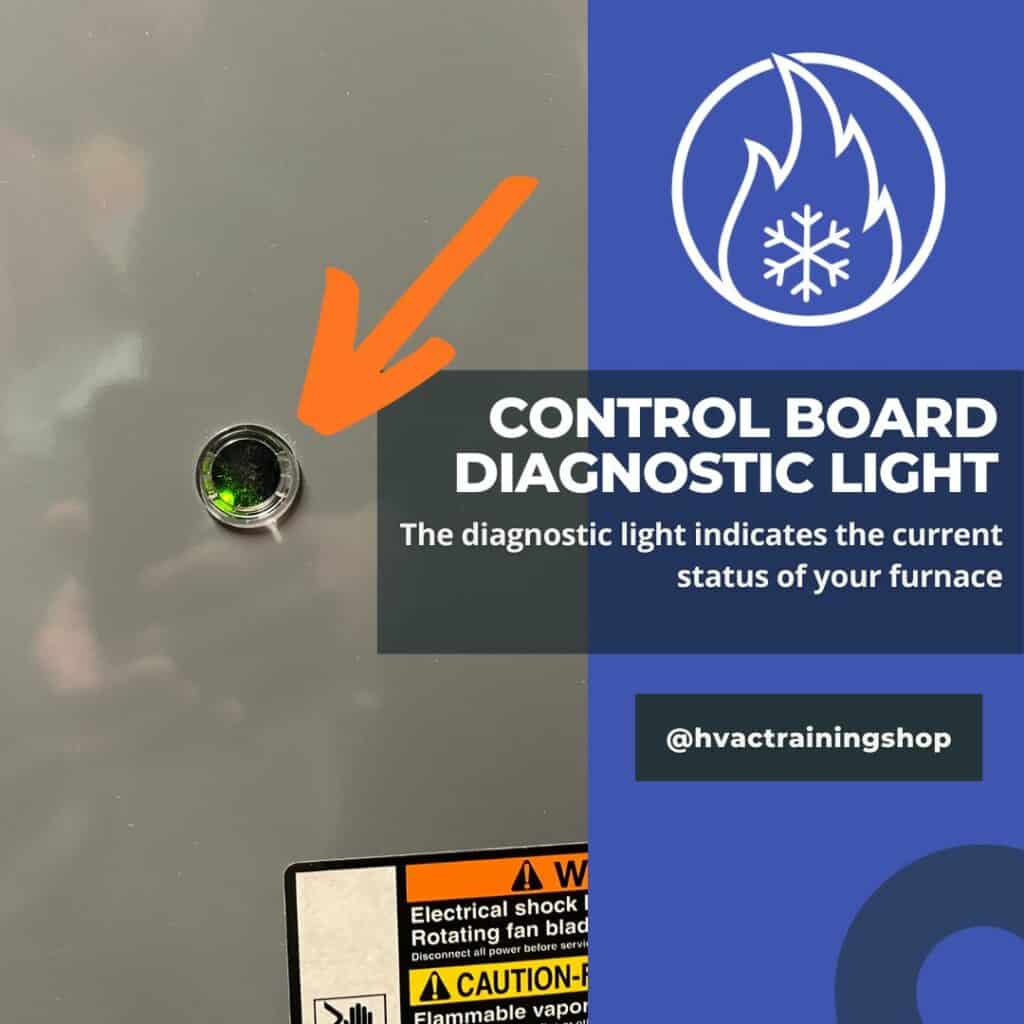
Inside your furnace, you should find a label that describes the flashing light error codes. It’s usually printed on the inside of the furnace’s panel, door, or control board.
For example, a single steady flash might indicate normal operation, while 3 flashes could indicate an open pressure switch.
If your furnace is showing an error, refer to your owner’s manual to figure out its possible cause.
Change the air filter
Many furnace heating issues are caused by one simple thing: A dirty air filter.
A dirty air filter can make your furnace blow cold by starving it of air.
If your air filter is dirty, swap it out with a clean one.
But how does a dirty air filter make your furnace blow cold?
It’s due to overheating—and the high limit switch.
Reset the high limit switch
When your furnace is starved of airflow, it may overheat and trip its high limit switch.
The high limit switch exists to prevent your furnace from overheating and destroying itself.
When your furnace’s high limit switch trips, the furnace will blow cold air and won’t shut off.
Some high limit switches reset automatically, while others need to be reset manually.
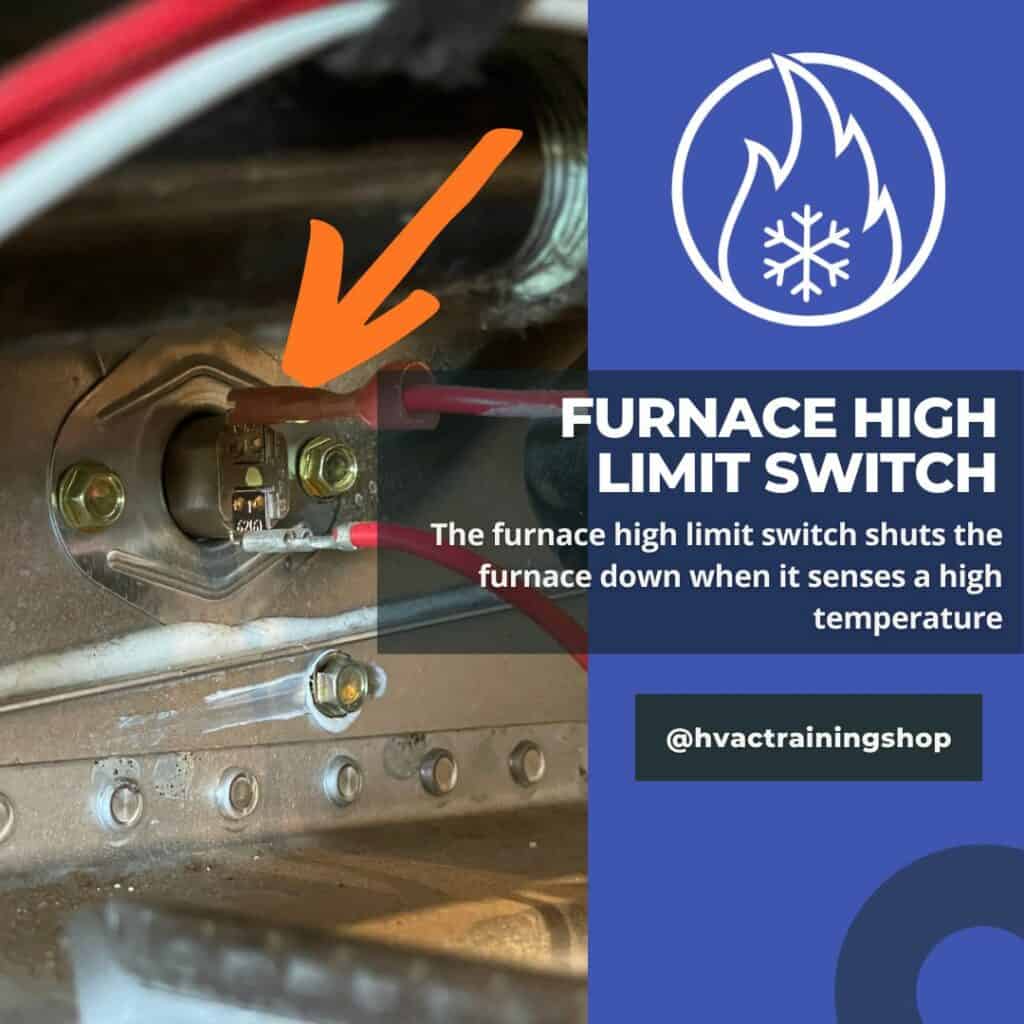
Either way, if your furnace’s high limit switch is tripped, then your furnace will blow cold air until the switch is reset.
If your high limit switch has a manual reset, look for a small red button on the back of the switch. Press the button and the switch will reset.
Check the ignitor or pilot light
Your furnace’s ignitor is responsible for lighting the gas on fire.
If your ignitor isn’t working, then your furnace won’t produce flames and heat.
Check the ignitor in your furnace and make sure that it’s not broken. The hot surface ignitor found in most newer furnaces is delicate and will crack if mishandled. Hot surface ignitors will also burn out in some cases.
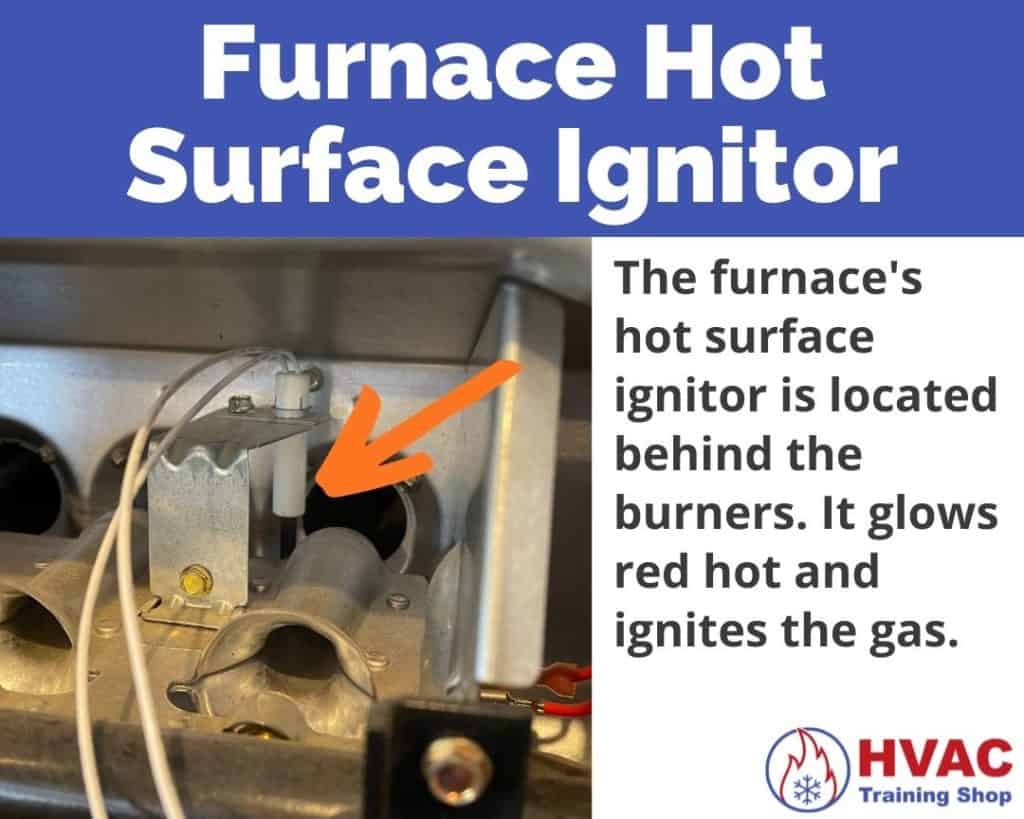
If you have an older furnace with a pilot light, make sure that it’s lit. If the pilot light isn’t on, then the burners won’t light up and produce any heat.
Clean the flame sensor
If everything else looks okay, the next thing you should check is your furnace’s flame sensor.
The flame sensor is responsible for detecting if your furnace is producing a flame. If your furnace is not producing a flame when it should be, the burners will turn off and you won’t have heat in your home.

The problem arises when your burners produce a flame, but the flame sensor doesn’t detect it. What causes that?
A dirty flame sensor impedes the flame sensor’s ability to detect a flame from the burners.
Over time, a flame sensor will get dirty with build-up from gas combustion byproducts. The result is a thin layer of oxidation compounds on the surface of the flame sensor rod.
If your burners shut off a few seconds after firing up, then the most likely reason is a dirty flame sensor.
If your furnace is showing this behavior, then I recommend cleaning the flame sensor.
Check the gas supply and gas valve
If your furnace isn’t getting any gas, check the gas supply.
The gas supply valve is located outside of your furnace and is connected to the gas line from your local gas utility company.
If the gas valve is shut, then your furnace won’t make a flame and produce heat.
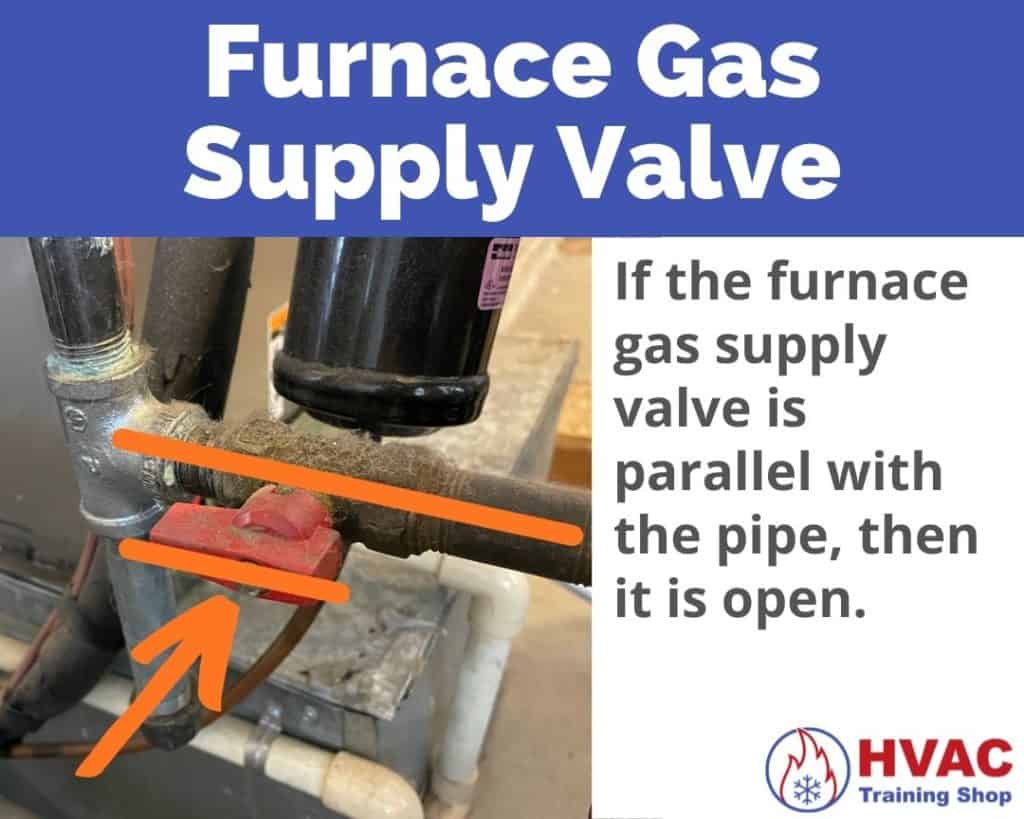
If the gas supply valve is open but your furnace still isn’t getting any gas, the next thing to check is the gas valve inside the furnace.
The gas valve inside the furnace is an electric valve that opens and closes based on commands from your thermostat.
The first thing to check on your furnace’s gas valve is if it’s on. Some gas valves have a switch that turns them off. If the switch is off, then the valve won’t open.
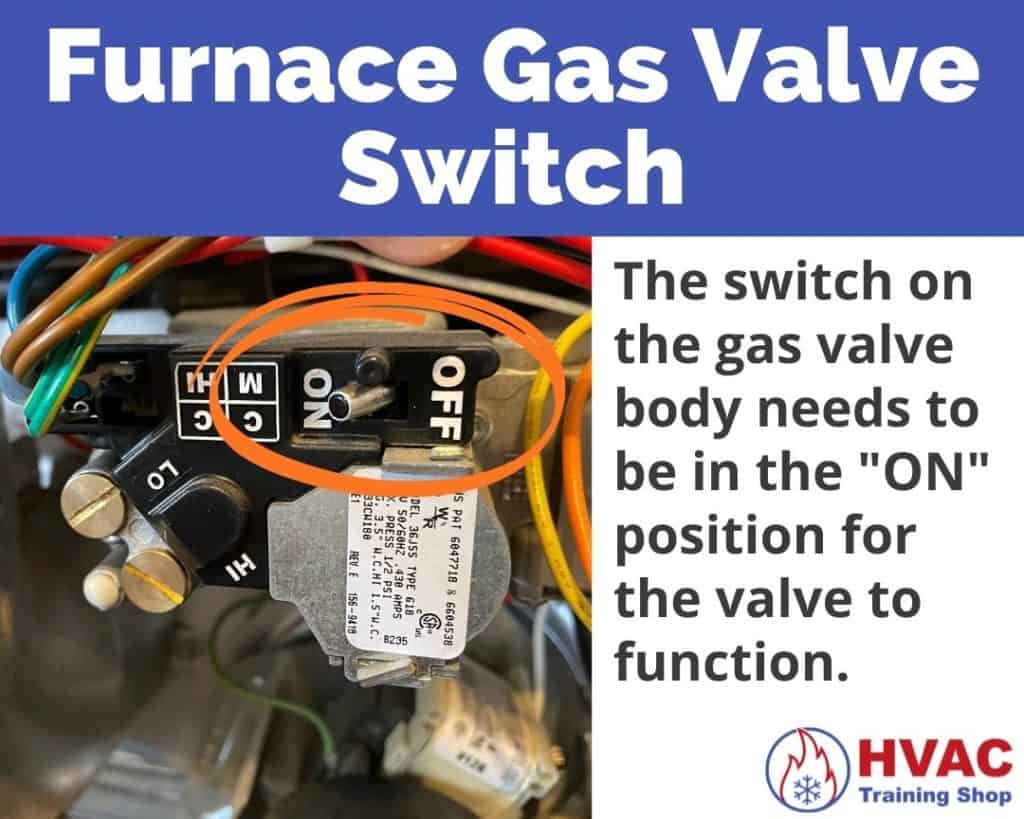
If you’re still having issues with your furnace gas valve, check out my article below:
Check the condensate drain and drain pan
If you have a high-efficiency furnace, then it will have a condensate drain and drain pan to remove water from the system.
Some furnaces have a condensate switch that detects if there is an excessive amount of water in the furnace.
Once the water reaches a certain level, the switch trips and your furnace shuts off. In some cases, your furnace will stay running, but it will blow cold air.
If your condensate switch trips, take a look at your furnace’s condensate drain and drain pan.
If there is an excessive amount of water, then the furnace’s condensate drain pipe is clogged and needs to be cleaned out.
Check out my article below for instructions on how to unclog your furnace’s condensate drain:


